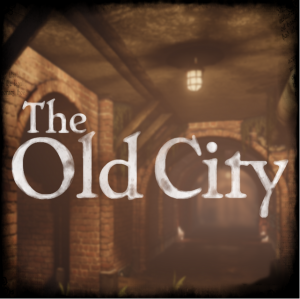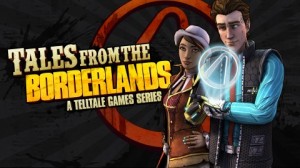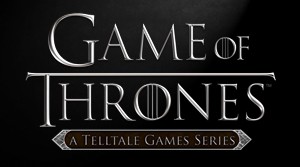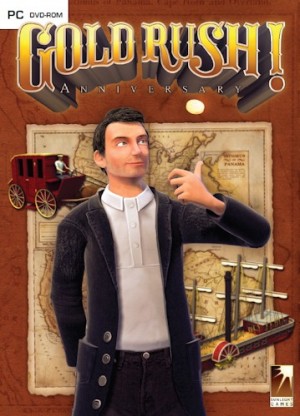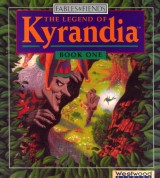Review for Munin page 2
If you thought Norse mythology was all about warring gods and Thor's mighty hammer, Munin is here to broaden your mind and shed light on one of its lesser-known stories. In this puzzle-platformer by Portuguese developer Gojira (and published by Daedalic, stepping out from their usual traditional genre fare), the focus switches from gods to… well, ravens. Specifically, a magical raven called Munin who now has a saga of his own. It turns out that when you burrow through all Munin's mythological trappings, what you'll find beneath is ultimately a fairly conventional puzzler. That's no bad thing, though: it may be conventional, but it's also well-designed and substantial.
Hugin and Munin, so the story goes, were ravens sent out by Odin at dawn to fly the entire world. At dusk, they would return to sit on his shoulders and tell him of everything they had seen. They were Odin's spies in the world of men, essentially. That's a lot to ask of two ravens, even magical extensions of Odin's very being, and he was inclined to worry about them both, particularly Munin. As far as actual Norse myth goes, that's pretty much it, but Munin takes that last point and runs with it. In this version, Odin was right to worry: Loki, everyone's favourite trickster god, has cast a spell on poor Munin and transformed him into mortal (human) form. His only hope now of recovering his original ravenhood and flying back to Odin is to traverse the nine worlds of the Norse cosmos in search of his missing feathers.
Your puzzle-sense may well be tingling at the mention of collecting feathers and you'd be right: the goal of each level is to collect all the available feathers, at which point your old friend Hugin swoops in, picks you up in his claws and flies you on to the next one. That's not to say Loki's going to make it easy for you, though. As you make your way from world to world, each has its own unique and fiendish twist, from rolling boulders to water, lava and light beams, each inspired by its setting. This is very definitely a puzzle game and that's as far as the plot goes, but each new phase is introduced by verses inspired by the Poetic Edda. As inscrutable as these often are, they do add a welcome air of gravitas to the proceedings, and I definitely came away from it all feeling that I knew a bit more about real Norse lore.
You can run, jump and climb ladders, but in suitably godly fashion, the primary gameplay mechanic consists of turning portions of the world around you. Each level is divided into a grid, starting at 3x1 and progressing to 3x3, and you're able to rotate any square except the one you're standing in by 90 degree increments. Move the cursor over a turnable square and its boundaries highlight in light blue (complete with a little ornamental knotwork in the corners); try to turn your own square and it’ll flash an angry red. The interface is nice and simple: click on a square to rotate it, run and jump using the keyboard or gamepad. Just to be on the safe side, the first level includes a brief tutorial.
In Midgard, the first world you encounter, this is all you'll have to contend with but it can still take thought and planning to move walls out of the way or move platforms and ladders into position at just the right time. Especially when you realise that, for example, you have to traverse a square in one position just to reach a neighbouring ledge, allowing you to turn it and get back to a platform that was too high up before. It may seem simple enough, but I regularly found myself having to plan several moves ahead, even quite early on.
If that's not enough, what really gave me (the good kind of) brain-strain is the way pairs of squares are often paired together, so that rotating one also rotates the other. As well as limiting your options – you can't rotate the square you're standing in, so you can't rotate its partner either – this restriction also has a knack of rotating just the wrong block at the wrong time and throwing a spanner in the works of what would otherwise have been a perfect plan.
Just as you've made it through Midgard and are starting to think you've got the hang of this world-rotating thing, each new world introduces its own unique element to the mix. (Just as a sidenote, the game uses original Norse spellings, but I'm going to take the cavalier step of translating them here.) In Jotunheim, the home of the giants, there are giant boulders that roll around as you rotate the world pieces, squashing you if you're not careful but also offering a platform to stand on if you are. Niflheim, the land of ice, introduces water that sloshes around and lets you swim up to otherwise inaccessible feathers. Hel, land of the dead, throws in glass "soul spheres" that set platforms moving if you roll them into the right spots. The most diabolical worlds, though, are Alfheim and Svartalfheim, homes of the light and dark elves. The first introduces light beams that you have to bounce off carefully placed mirrors to access parts of the level, while in the second those beams are replaced by black death rays. Yes, death rays: let them touch you and you die, instantly, resetting the level. I did warn you it was diabolical!
Remember what I said about those paired squares throwing a spanner in the works? This is particularly true of the water and lava levels, where all your painstaking effort to pour their respective fluids into a jug-like part of the scenery can be undone in an instant by one accidental turn that pours it all away again. This doesn't leave you stuck – anything that's poured away by mistake is pumped back into the scene again through a vent, but these incidents all too often left me having to redo an intricate series of steps just to get back to where I'd started for another try.
As frustrating as that could be, however, it's as nothing compared to Svartalfheim, the world of the death beams. These levels may be sprinkled with reflectors that bounce the beams safely out of the way, but that doesn't count for much when one unexpected turn can kill you instantly. More times than I'd like to remember, I'd experimentally turn one block only to have another turn as well, sending a beam scything my way. With all those mirrors around, keeping track of what would happen if I made any given move got to be totally mind-bending. On some of the later levels, I wound up writing the right moves down, walkthrough-style, because I had to repeat them so many times before finally making it through. All this gives the game a distinctly old-school flavour, so depending on your temperament, you can either see it as a refreshing challenge or an unnecessary frustration. In any case, if your spatial awareness isn't great, this is definitely not the game for you!
Although there is some running and jumping involved, Munin doesn't demand quick reflexes, at least most of the time. Occasionally you'll need to jump out of the way of a rolling boulder or twist a block just long enough to guide a soul sphere into the right slot, but this is largely a game of strategy and planning. Once you've worked out what to do, actually doing it is generally the easy part.
The difficulty curve is unusual: each world is self-contained and begins with a few easy tutorial levels before ramping up the challenge level and finishing with some quite serious puzzles. As such, after finishing one world the first few easy levels of the next often feel like a welcome breather. Also, the new gameplay elements don't build on each other the way you might expect: once you're done rolling boulders around on Jotunheim, you won't see them again until you reach the last world, Asgard. (Asgard, as befits the finale, takes everything that has gone before and mixes it all up together.) The worlds are arranged within Yggdrasil, the world tree, in groups of two or three; you can tackle the worlds within a group in any order you like, and even switch around from one to another, but you must complete each group to open up the next.
Artistically, each level is set against a series of beautiful backdrops painted in a naive style: it feels like you're looking at a medieval painting, from a time before artists learned about perspective and finely-polished brushwork. The nine worlds are nicely varied, from the icy wastes of Niflheim to volcanic Muspelheim, dark and brooding Hel to bright and airy Alfheim. These have also been given a shimmering, rippling effect; whether that's to highlight the mystical unreality of the worlds Munin is travelling through or just to make the screens feel more kinetic and alive, I'm not sure, but it's certainly distinctive. The foreground elements are drawn in the same style, and look good for the most part. In some worlds, though, that naivete can come across as simply crude. Man-made constructs of wood and stone look great; naturally sculpted rock less so.
By contrast, the animation is less successful than the art itself. Water and lava in particular are simulated using realistic physics, but in quite large chunks and not especially smoothly. Seeing water pouring off a platform, it looks like a rain of mini icebergs. (Although it is a land of ice, so maybe that's not entirely implausible!) Munin himself is nicely animated on the whole, except that he's really not keen on swimming: the moment he gets into water he's ramrod-stiff. He also has a disconcerting habit of looking at you the whole time, even while running and jumping; I kept wanting to tell him to look where he was going!
One area that deserves unreserved praise is the level design: the designers and artists have done a great job making the pieces of each level fit together. If it was tricky to think through as a player, it must have been ten times trickier to design. Also, I started out thinking I could deduce how to rotate the squares by targeting orientations that looked more natural or “right” than others, but rapidly found that no matter which way you turned them the pieces tended to fit together neatly. That’s quite an achievement given all the possible permutations.
Musically, Munin's definitely going for solemn and portentous, with long, echoing chords and throbbing bass; they're more soundscapes than melodies. Mostly the music sits in the background, setting the mood. That atmosphere is usually somber and brooding, although it does have its lighter moments. This is a quest, it seems to say – an important quest with implications for multiple worlds and not just some guy going round collecting feathers.
Setting aside all its godly trappings and ancient Norse poetry, Munin is ultimately a pretty solid and substantial puzzler. It offers plenty of playtime (10-15 hours, depending on how good your spatial reasoning is) and often cunning puzzle design. It isn't afraid to up the difficulty level either; if you get to the end, you'll definitely feel like you've earned your victory. It doesn't break any particularly new ground and could have done with a little more visual polish, but if you're after a mental workout and don't mind the old-school sensibilities, you'll find much here to enjoy.



_capsule_fog__medium.png)







